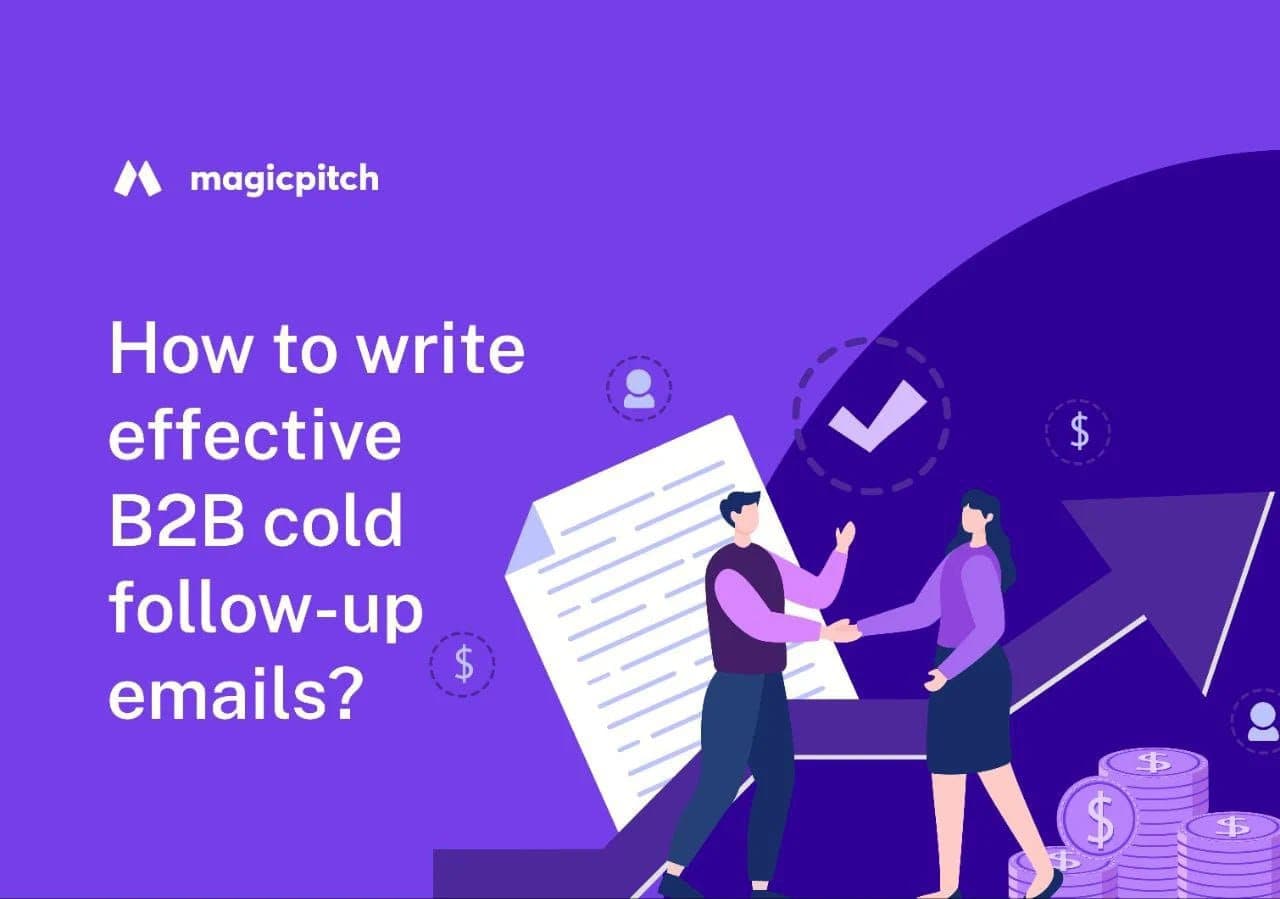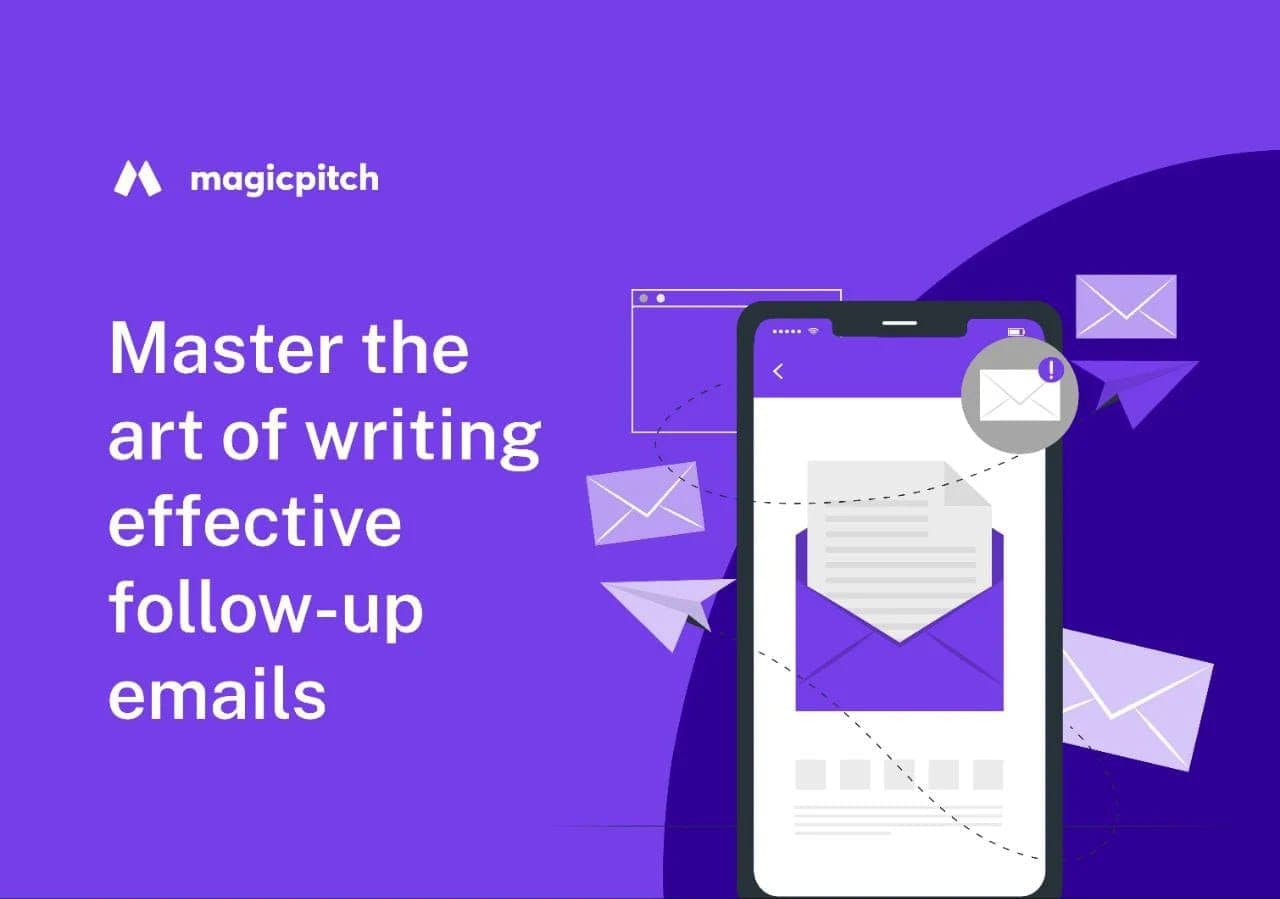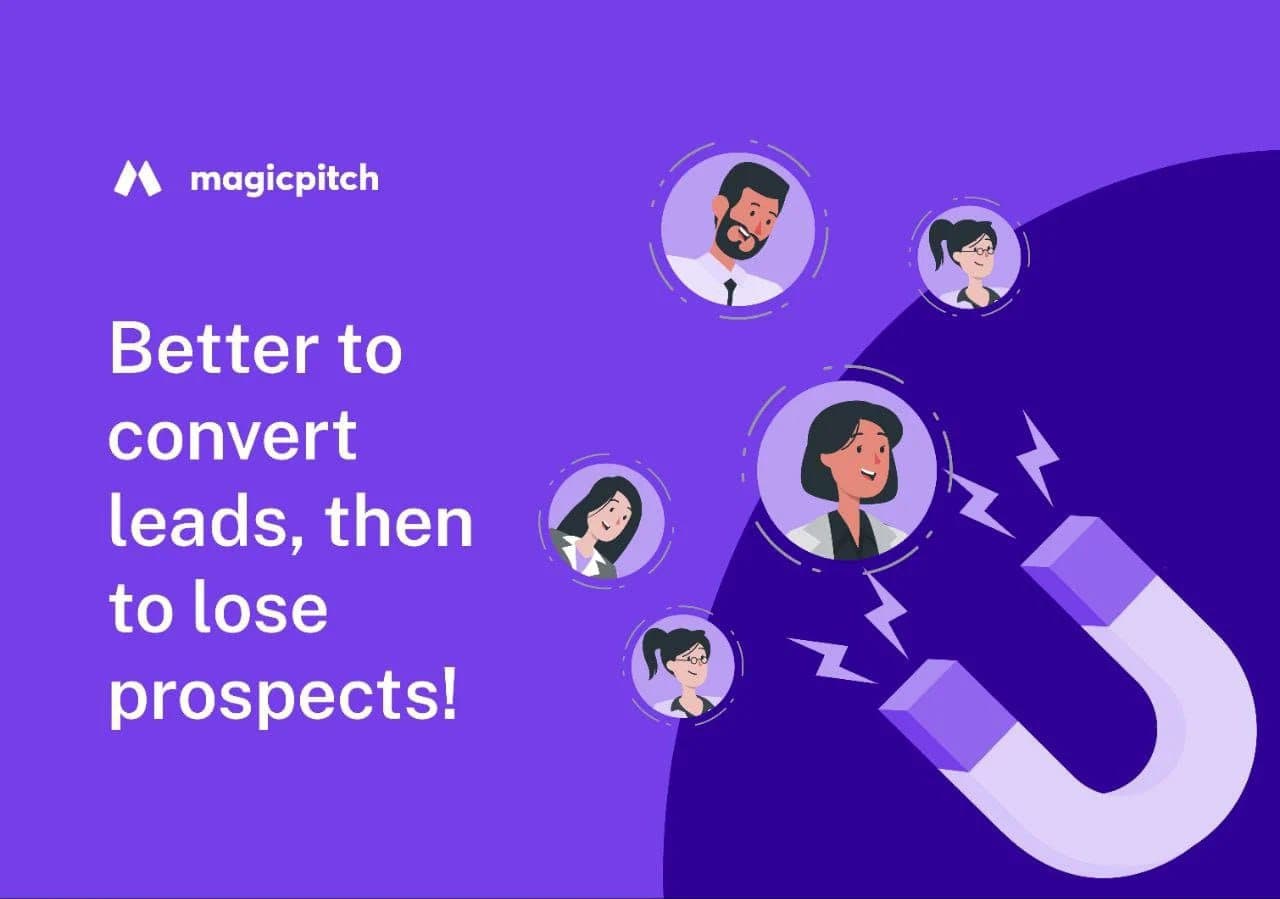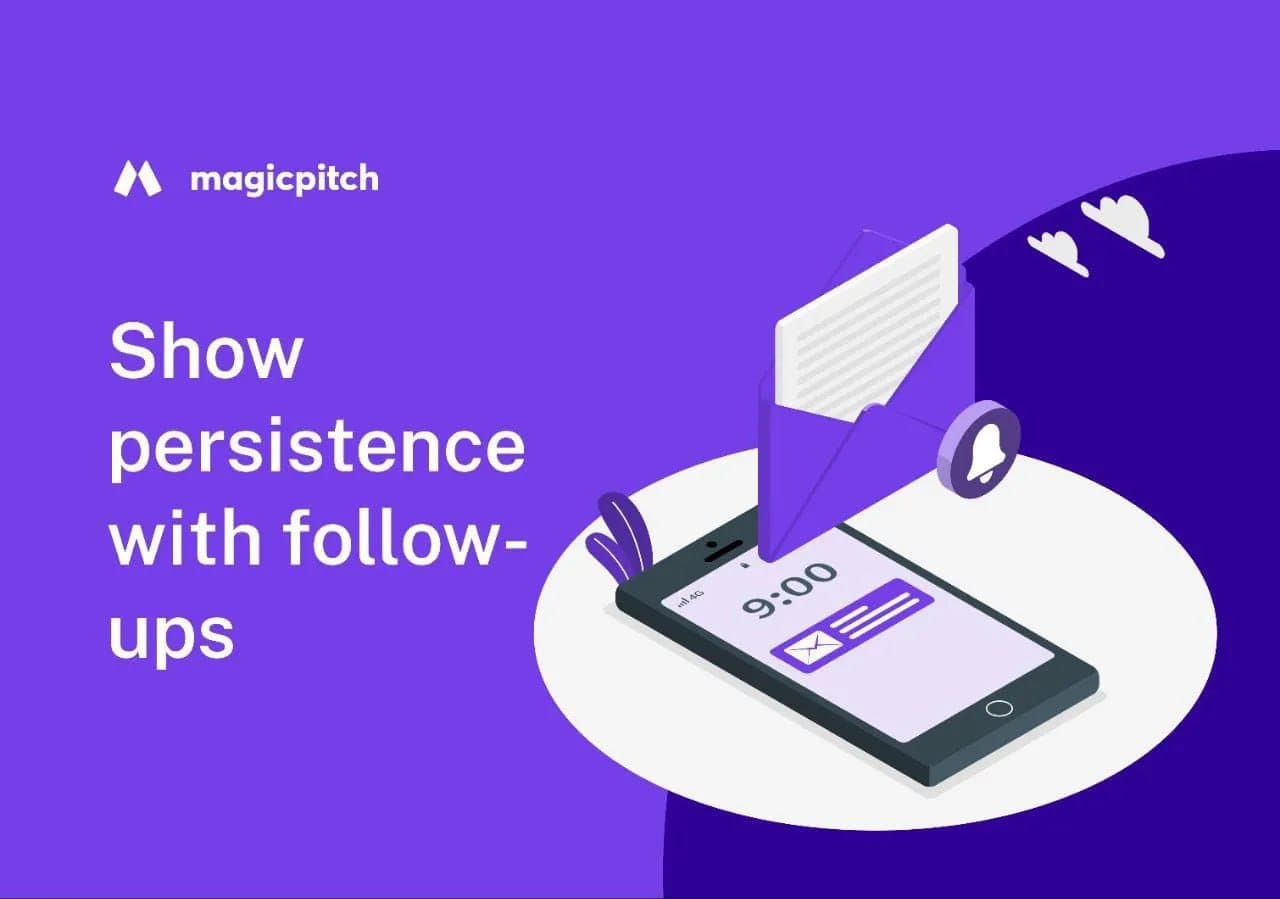Magicpitch | March 22, 2024
10 Min Read

Sending a cold email follow-up is crucial to maximising your conversion rates.
However, it’s also tricky.
You’ll need to decide how many follow-ups to send, when to send them, how to write your cold email follow-ups and more.
But don’t worry.
In this article, I’ll first highlight why you need to send a follow-up to your first cold email and provide effective ways with examples to get your cold emailing efforts off the ground.

Crafting effective cold emails is a challenging skill that even experienced sales professionals struggle to perfect. While having well-designed templates is valuable, it's essential to understand how to tailor them to achieve desired outcomes.
Despite personalised efforts, there's no assurance of immediate success with cold emails. For salespeople, the thought of sending follow-up emails when initial outreach goes unanswered can feel intimidating.
Nevertheless, the cold email follow-up remains an integral component of any outreach strategy, significantly boosting conversion rates.
But why?
Usually, no sales come from the initial point of contact with a lead. Actually, it makes up a mere 2 percent of sales.Having said that, I should also mention that there are a few reasons why your initial email might not have been answered. Most likely, the contact is too busy to respond, or they have so many emails in their inbox that prospecting emails end up at the bottom of the stack.
For whatever reason, following up with an email can mean the difference between losing the lead and receiving the desired response. Remember that cold email follow-ups are useful for purposes other than cold email marketing campaigns.
Other instances, such as after cold emailing for a job or meeting, you might need to follow up.

B2B cold emailing is hard, isn’t it? You spend all that time finding a prospect, researching their interests, crafting the perfect message, then press send on your meticulously written cold email. And … no response. Nothing.
Writing effective B2B cold follow-up emails requires a delicate balance of persistence, personalization, and professionalism.
Well, the modern inbox is a noisy place. The average office worker gets over 120 emails per day. And 59% of email recipients say they receive sales emails that are irrelevant.
Everybody is selling them something — including you.
But, it’s not all doom and gloom. Cold emailing is still one of the most effective tactics in a B2B sales reps arsenal. 71% of actual buyers actually want to hear from sellers when they are exploring a new product or idea.
Here's a detailed guide on how to craft compelling follow-up emails:

Although it might seem overwhelming at first, you can greatly improve your chances of engaging prospects and generating conversions by putting this guide's strategies into practice. These strategies include creating attention-grabbing subject lines, reminding recipients of past interactions, posing intelligent questions, and clearly stating calls to action.
If you want to create a hyper personalised outreach with effective follow-up, do checkout the services of MagicPitch and understand how it helps you in sending cold emails that will help your business to grow clients.
Throughout the follow-up series, understand the importance of professionalism to add value and personalise your emails. It is possible to convert cold leads into warm prospects and eventually devoted clients if the business tries to be persistent, patient, and focus on creating deep connections.
Ans. So leave at least 2 days between your first and second point of contact, then give them a bit more time in between emails as you continue to follow up.
Ans. The first follow-up email is naturally the most effective. It brings the highest reply rate, even about 40% higher compared to the initial email.
Ans. Give at least a week before following up, otherwise might come off as pushy.
Ans. A follow-up email is a way to add value and to assist your customers in every step of the buyer's journey. Build trust.
Ans. In a follow-up email after no response, briefly recap your previous message, provide additional context or value, and include a clear call to action. A subject line like “Just Checking In – Any Updates?” can be effective.